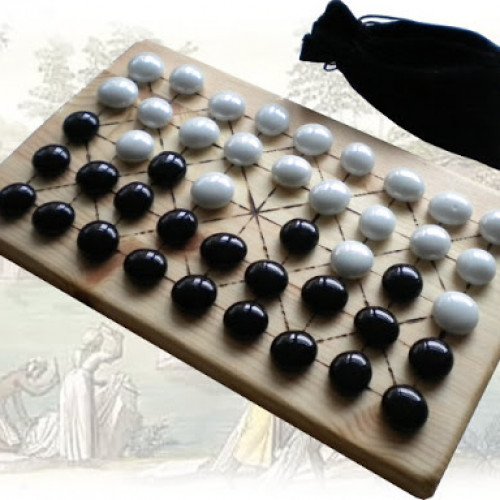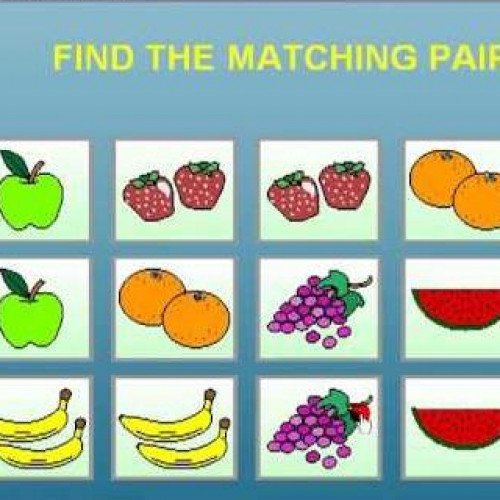FANORONA VS MATCHING GAME

FANORONA
Fanorona (Malagasy pronunciation: [fə̥ˈnurnə̥]) is a strategy board game for two players. The game is indigenous to Madagascar. Fanorona has three standard versions: Fanoron-Telo, Fanoron-Dimy, and Fanoron-Tsivy. The difference between these variants is the size of board played on. Fanoron-Telo is played on a 3×3 board and the difficulty of this game can be compared to the game of tic-tac-toe. Fanoron-Dimy is played on a 5×5 board and Fanoron-Tsivy is played on a 9×5 board—Tsivy being the most popular. The Tsivy board consists of lines and intersections that create a grid with 5 rows and 9 columns subdivided diagonally to form part of the tetrakis square tiling of the plane. A line represents the path along which a stone can move during the game. There are weak and strong intersections. At a weak intersection it is only possible to move a stone horizontally and vertically, while on a strong intersection it is also possible to move a stone diagonally. A stone can only move from one intersection to an adjacent intersection. Black and white pieces, twenty-two each, are arranged on all points but the center. The objective of the game is to capture all the opponents pieces. The game is a draw if neither player succeeds in this. Fanorona is very popular in Madagascar. According to one version of a popular legend, an astrologer had advised King Ralambo to choose his successor by selecting a time when his sons were away from the capital to feign sickness and urge their return; his kingdom would be given to the first son who returned home to him. When the king's messenger reached Ralambo's elder son Prince Andriantompokondrindra, he was playing fanorona and trying to win a telo noho dimy (3 against 5) situation, one that is infamously difficult to resolve. As a result, his younger brother Prince Andrianjaka was the first to arrive and inherited the throne.
Statistics for this Xoptio

MATCHING GAME
Matching games are games that require players to match similar elements. Participants need to find a match for a word, picture, or card. For example, students place 30 word cards; composed of 15 pairs, face down in random order. Each person turns over two cards at a time, with the goal of turning over a matching pair, by using their memory. Most matching games are objective, with correct answers in the rules for what counts as a match, pair, etc. Some however, like Dixit or Apples to Apples, are about subjective matches picked by one or more judge players. Here the correlation between a match holds value only as other players decide it, but rules dictate who will make those decisions and when.